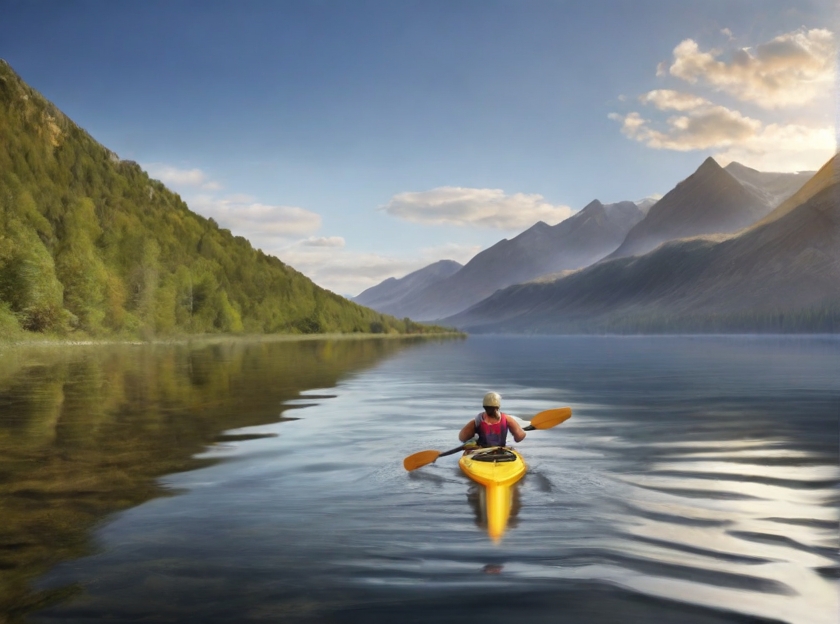Kayaking is a fun and exciting sport that can be enjoyed by people of all ages and skill levels. However, one of the most important factors that can affect your kayaking experience is the water level of the river or lake you are paddling on. The water level can change depending on the season, the weather, the dam releases, and other factors. Knowing how to choose the right water level for your kayaking trip can make a big difference in your safety, comfort, and enjoyment.
Why Does Water Level Matter?
The water level of a river or lake can affect several aspects of kayaking, such as:
- The speed and difficulty of the current. Higher water levels usually mean faster and more powerful currents, which can make kayaking more challenging and dangerous. Lower water levels can mean slower and calmer currents, which can make kayaking easier and more relaxing.
- The size and frequency of the waves. Higher water levels can create bigger and more frequent waves, which can add excitement and thrill to your kayaking adventure. Lower water levels can create smaller and less frequent waves, which can make kayaking more smooth and stable.
- The presence and visibility of obstacles. Higher water levels can submerge rocks, logs, branches, and other obstacles that can pose a hazard to your kayak. Lower water levels can expose these obstacles and make them easier to see and avoid.
- The accessibility and availability of launch sites. Higher water levels can make it easier to launch and land your kayak from different locations along the river or lake. Lower water levels can make it harder to find suitable launch sites and may require you to drag your kayak over shallow or rocky areas.
How to Choose the Right Water Level for Kayaking?
There is no definitive answer to what a good water level for kayaking is, as it depends on your unique preference, skill level, type of kayak, and type of waterway. However, here are some general guidelines to help you choose the right water level for your kayaking trip:
- If you are a beginner or have an entry-level kayak, you may want to stick to small, warm, calm lakes or slow-moving rivers with clear water. These conditions will give you the best overall experience and allow you to learn the basic paddle strokes and maneuvers without much difficulty. A good water level for these waters is usually between 1 and 3 feet deep, which is enough to float your kayak without hitting the bottom or scraping your paddle.
- If you have some experience and skill or have a more advanced kayak, you may want to try larger lakes or faster rivers with some rapids and waves. These conditions will give you more of a challenge and excitement and allow you to test your skills and techniques in different situations. A good water level for these waters is usually between 3 to 6 feet deep, which is enough to create some fun features without being too dangerous or overwhelming.
- If you have a lot of experience and skill or have a specialized kayak, you may want to explore huge lakes or raging rivers with high-class rapids and big waves. These conditions will give you the ultimate thrill and adventure and require you to have excellent skills and equipment to handle them safely. A good water level for these waters is usually between 6 to 10 feet deep, which is enough to create some spectacular features without being too extreme or risky.
How to Check the Water Level Before Kayaking?
Before you go kayaking on any river or lake, it is always a good idea to check the water level beforehand. This will help you plan your trip accordingly and avoid any unpleasant surprises or dangers along the way. There are several ways to check the water level before kayaking, such as:
- Online sources. You can use websites or apps that provide real-time or updated information on the water level of various rivers and lakes around the world. Some examples are USGS Water Data (https://waterdata.usgs.gov/), American Whitewater (https://www.americanwhitewater.org/), Paddling.com (https://paddling.com/learn/river-gauges/), etc.
- Local sources. You can contact local authorities, outfitters, guides, clubs, or other paddlers who are familiar with the river or lake you are planning to kayak on. They can give you reliable information on the current water level and conditions, as well as any tips or warnings that may be useful for your trip.
- Personal observation. You can visit the river or lake yourself before your kayaking trip and observe the water level and conditions with your own eyes. You can look for signs such as the color and clarity of the water, the presence and size of waves, the height and width of the river or lake, etc.
Conclusion
Kayaking is a great way to enjoy nature, exercise, and have fun. However, choosing the right water level for your kayaking trip is essential for your safety, comfort, and enjoyment. By following the guidelines and tips in this article, you can find the best water level for your skill level, type of kayak, and type of waterway. Happy paddling!





